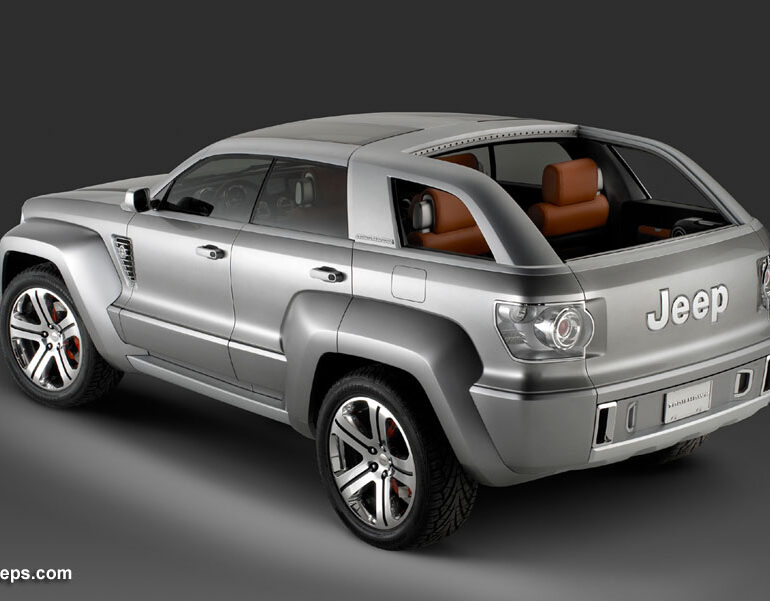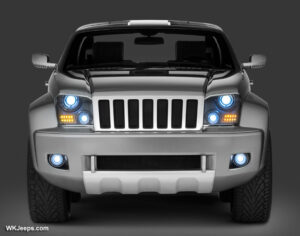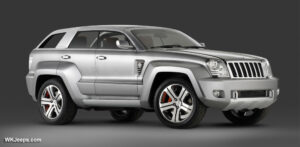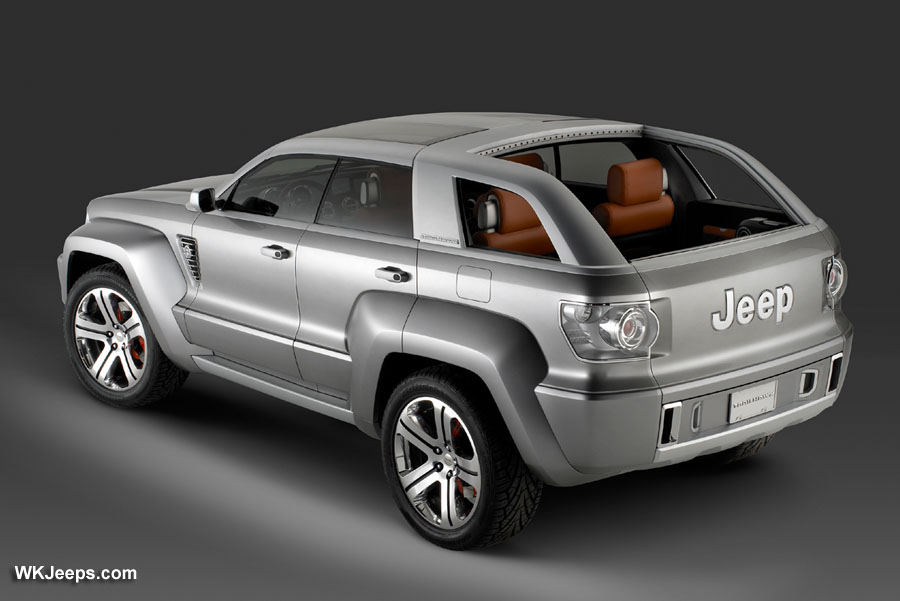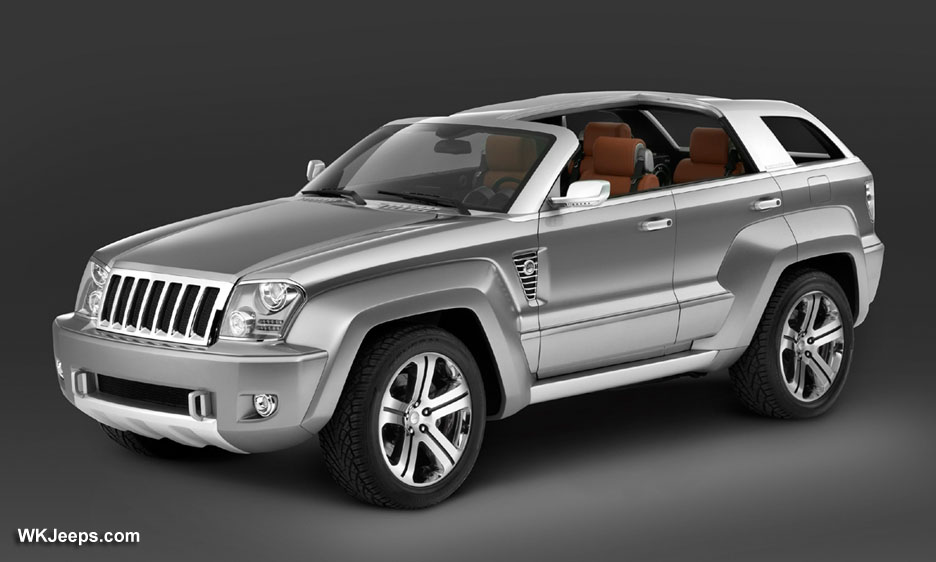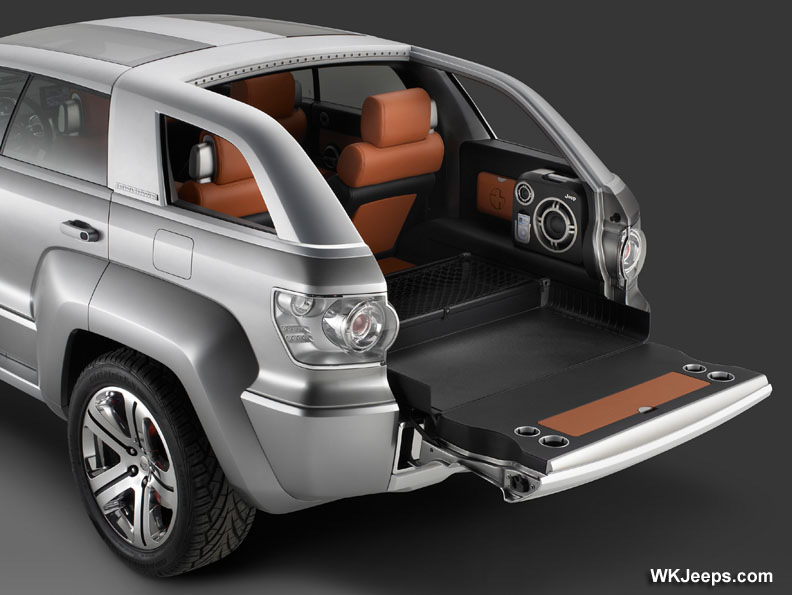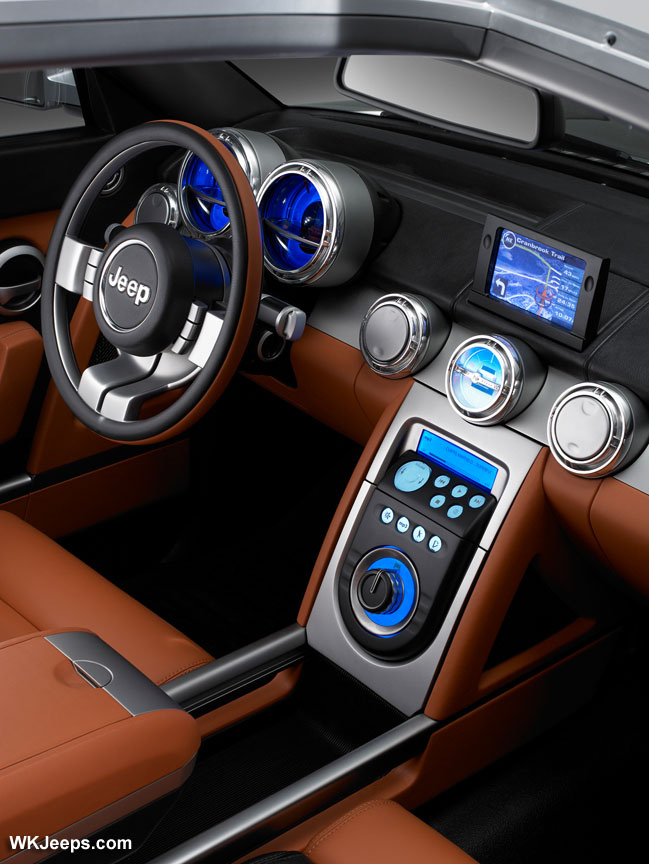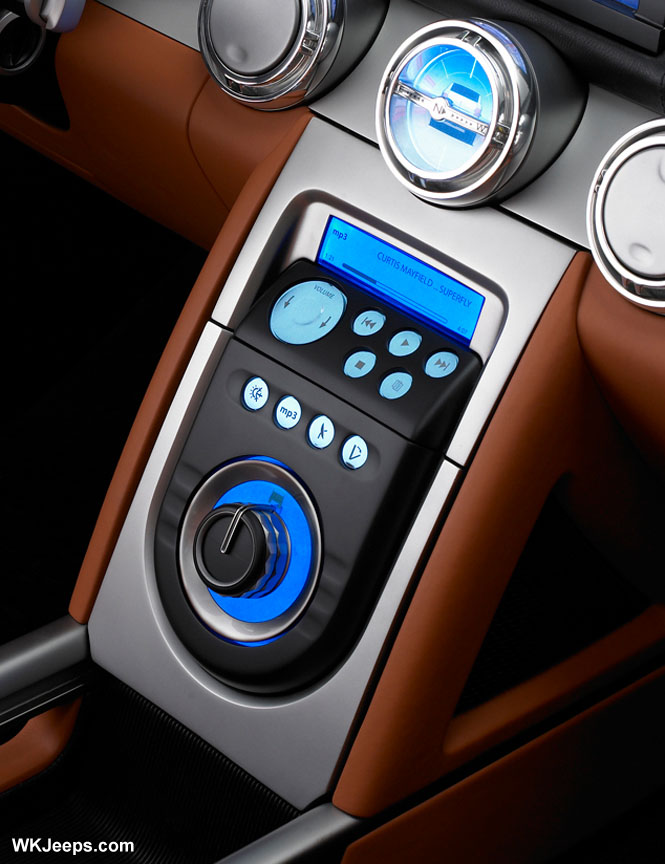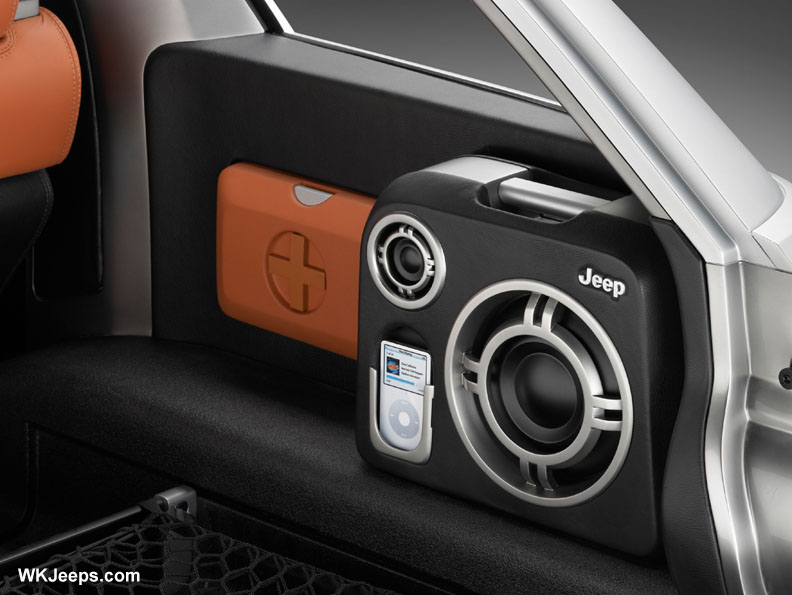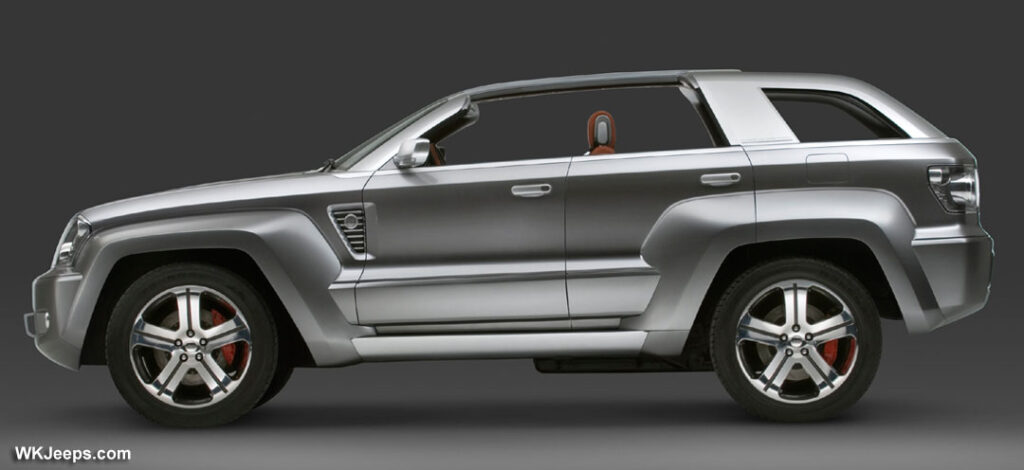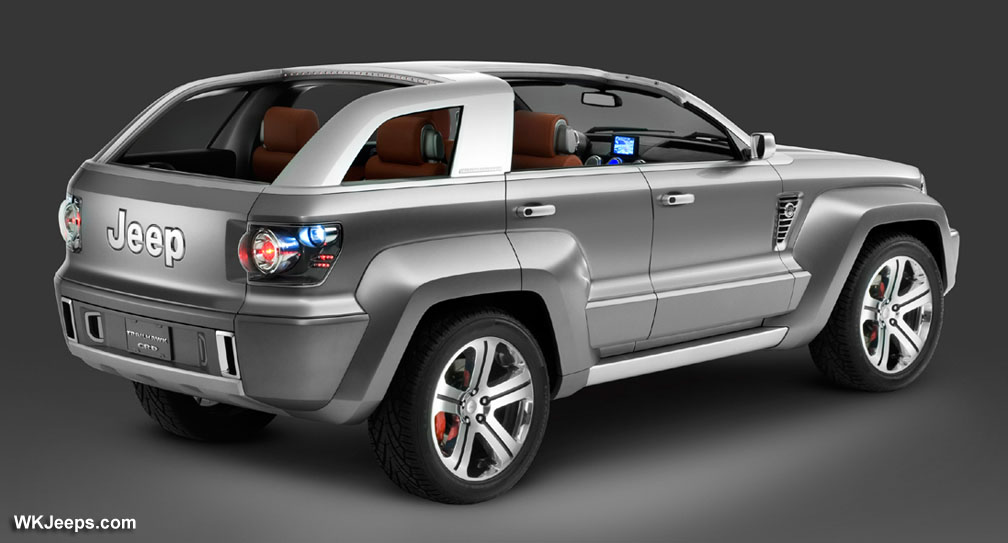Welcome to the JeepSpecs.com archived showcase of the 2007 Jeep Trailhawk concept. Did we miss anything? Please get in touch with us and tell us about it!
The Jeep® Trailhawk concept merges the spectrum of the Jeep brand by combining the core off-road features of the new body-on-frame four-door Jeep Wrangler Unlimited with the refined sophistication of an all-new on-road open-air concept vehicle, providing a unique and fresh expression for Jeep. Built off the new Wrangler platform, the Jeep Trailhawk is a more refined highway cruiser without sacrificing any of Jeep’s legendary off-road capabilities.“The key to the look of the Trailhawk,” said Nick Vardis, principal exterior designer, “is the vehicle’s distinctive proportions, due in part to its 116-inch wheelbase. The dash-to-front-axle dimension is dramatically long, giving the vehicle a sense of forward motion, while the front and rear overhangs are tight and abbreviated.”
Vardis said the body side is muscular and broad-shouldered, with the sheet metal pulled into shape, much like a drawn arrow in the bow of a skilled archer. Even the pillars are pulled back. The forward motion of the body is further accented by the drive of the raising beltline.
The stance is broad, and the wheels, pushed to the corners of the vehicle, are enclosed in robust flares dramatically offset from the body. Partly trapezoidal in shape, yet not asymmetrical, these angular, crisply-contoured wheel flares reinterpret one of Jeep’s fundamental design cues.
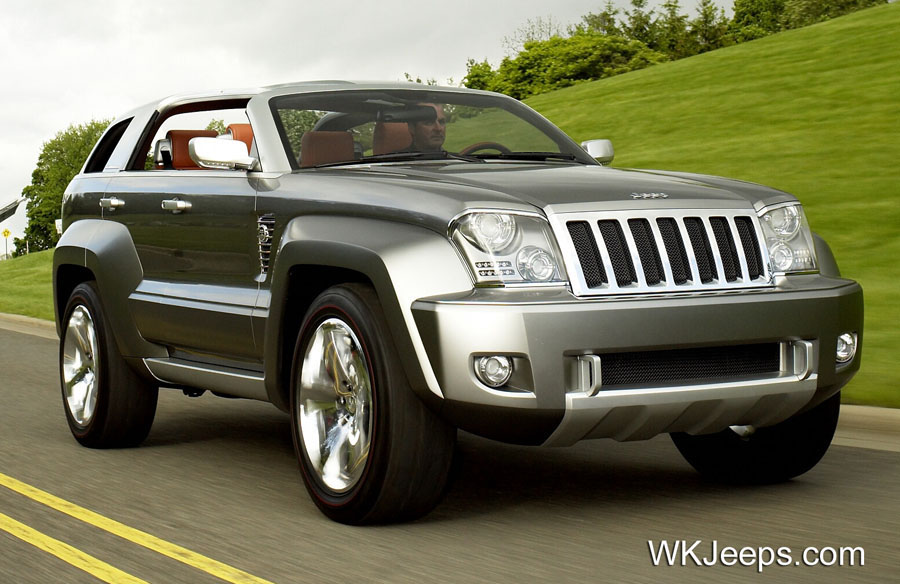
“The flares are stretched and pulled taut at one end,” Vardis said. “Each presents a ‘long side’ angled toward the center of the body.”The body in turn tapers toward the front in plan view to expose more of the flares and accent the wide stance. The flares enclose large 22-inch, five-spoke wheels, each with a hefty 34-inch overall diameter. The specially-crafted tires are accented by a red stripe, with the red color repeated on the exposed brake calipers.
The lower body, which kicks outward along the bottoms of the doors, intersects the flares crisply. Tucked beneath this horizontal element is a recessed running board, accented by a silver molding. A tall trapezoidal vent, located at the front fender-front door cut line, is home to the circular Trail Rated badge.The Trailhawk’s long hood is fronted by a signature seven-slot Jeep grille angled rearward to match the lean-back surface of the forward flares, with the slots filled with a mesh texture. Bracketed between the grille and the flares, the chamfered headlamps mimic the lean-back stance. Beneath their clear flush lenses, HID projector beam quad lamps nestled into twin “telescopic” polished aluminum barrels light the way forward while LEDs, configured in parallel stripes provide park and turn signals.
“The main headlamp units are cropped diagonally across the top,” said Vardis. “They peer out from an angled brow, giving the vehicle its bold, sinister look. In front view, the left and right lamps evoke the hooded eyes of a bird of prey.
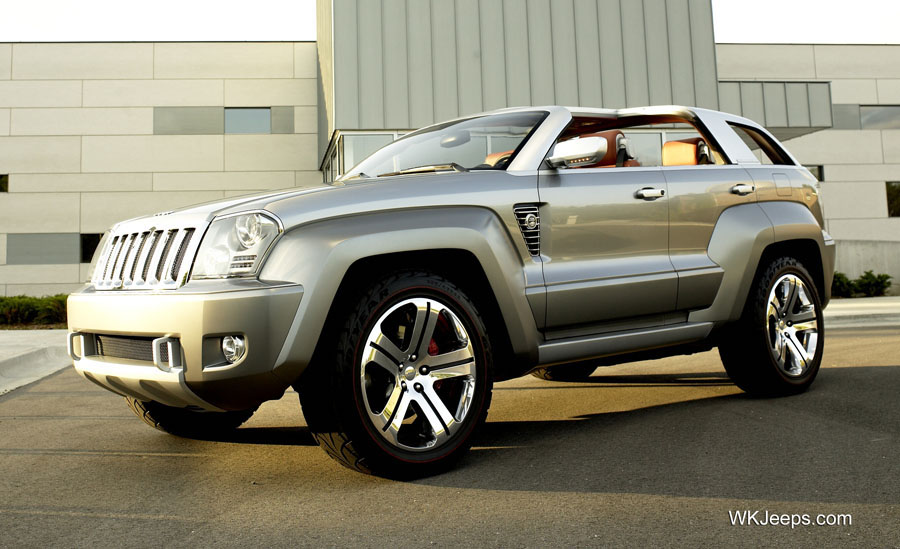
“Like other concepts, we first viewed the math surface of the grille and headlamps together in the computer” added Vardis. “We immediately noticed the hawkish expression, hence the name ‘Trailhawk.’”
The taillamps mimic the look of the headlamps, including the striped turn signals, with the surface of the liftgate carved away.
The vehicle’s upper structure is set onto the lower body, encased by a crisp, chamfered 360-degree molding that runs around the greenhouse, accenting the high, arching beltline. At the base of the windshield is a seven-slot cowl screen that reprises the grille. The body is painted in Argent Pearl high-gloss, with the flares and lower body a slightly darker low-gloss variant.
The side windows retract fully into the body, leaving no B-pillar above the belt, while the diagonal quarter windows are also fully retractable. Gray-tinted twin longitudinal glass panels over the first- and second-row seats and the glass panel over the cargo compartment are removable, as is the swing-up backlight. With all the glass lowered and removed, the Trailhawk offers occupants virtually the same open-air ambience as a typical soft top Jeep. The fixed central spine contains overhead lighting and several integrated storage bins.
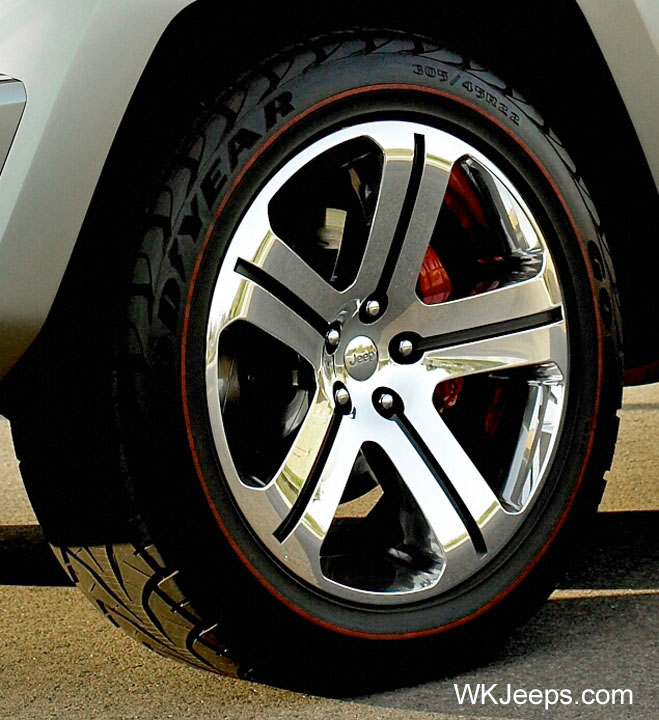
“The Jeep Trailhawk interior emphasizes the vehicle’s open air-freedom, inviting elements of the exterior theme into the interior,”said Cliff Wilkins, responsible for the interior design. “Tough mechanical elements which evoke exterior details are contrasted with sophisticated materials and finishes to give a modern, rugged, purposeful interior while delivering a premium off-road experience.”
The four-passenger interior is dominated by two major design elements -the cross-car instrument panel (I/P) form and a full-length central spine which forms the floor console. The AC outlets, center stack compass/inclinometer, and the dimensional, double-deck “biplane” gauges are housed in circular casings having the appearance of machined aluminum, with detailing matching headlamp surrounds. The two-tone leather-wrapped aluminum steering wheel features vertical individual switches for lights and speed control.
Riding the transmission tunnel, the console’s raised walls create a full-length open bin, handy for the storage of sundry items. Within the console’s side rails, two front/rear combination armrest/storage bin modules, movable via concealed tracks, can be positioned fore-aft at the occupants’ discretion. Using the familiar touchpad technology of laptop computers, a flip-out pad for the remote control fold-away flat screen navigation unit is housed in the forward armrest.
How Trailhawk got its name
They had the platform, and they had the chassis — and only a few months to pull together a concept vehicle. The Advanced Product Design studio put together a team, and slowly, a two-dimensional sketch began morphing into the Trailhawk. It was during a review with all the Chrysler Group Design management, as the images of the new Jeep® concept flashed on a screen, that someone said it looked like a hawk. “For the first time, we saw the face and the expression of the car,” Don Renkert, the designer who eventually named the Trailhawk, recalled. “Suddenly we had a set of eyes and a set of teeth, and we all sat back and said, ‘Wow, that’s cool,’ because the car had an expression.”It had this slightly furrowed brow, and the first thing we all said was it looked like an eagle or a hawk. It had that sort of attitude about it, a little bit of a scowl to it, which is not typical of Jeep.”
Specifications:
Engine: 3.0L BLUETEC common-rail diesel
Horsepower: 215 hp @ 4000 rpm
Torque: 376 ft. lb @ 1600-2800 rpm
0-60 mph: 9 seconds
1/4 Mile: 15.7 seconds (top speed: 124 mph)
Range: 300 miles
Drivetrain: 4WD, 5-speed automatic
Suspension: Solid axle w/ 4 front bar links, 5 rear bar links
Tire size: 305/45R22 33” (838 mm)
Wheel size: 22” x 10”
Crawl Ratio: 29:1 (3.73:1 axles)
Weight: 3900 lbs (est)
Length: 191.2” (4858 mm)
Wheelbase: 116” (2946 mm)
Front overhang: 34.5” (878 mm)
Rear overhang: 40.7” (1033 mm)
Max width: 77.7” (1968 mm)
Height: 69.3” (1761 mm)
Track: 64.2”
Approach/departure angle: 27 Degrees/33.5 Degrees
Couple: 33” (838 mm)

